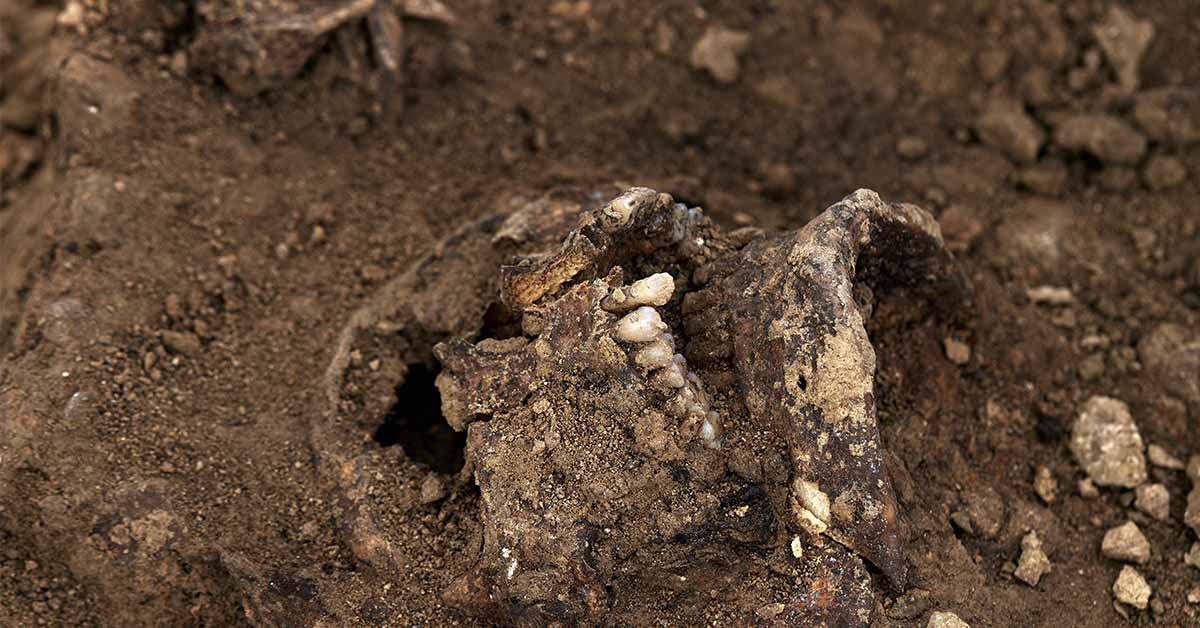Do you believe in vampires? Perhaps you like books, movie, and television about the mythical creatures, but likely you don’t actually think they are real. Between the 11th century and 17th century in Poland, however, people did. Not only that, but they actually had a very real fear of them. So much so that they buried people in specific ways to try and prevent them from coming back as a vampire after death. Several years ago, archeologists discovered a 17th century female skeleton buried with a sickle around her neck and a padlock on her toe. Evidently, those who buried her were worried about her demonic return.
Archeologists Discover A 17th Century Polish Vampire
Historians have discovered that at least as far back as the 11th century, Eastern Europe believed in a myth that after they died, some people would come back to life. Not in a happy, reunite with their loved ones way, however. Rather, they believed that these people would claw their way out of their final resting place as vampires, out to drink the blood of anyone in their path. Over the years, archeologists have found evidence of these beliefs based on skeletons that they uncover.

In a 17th-century graveyard in Pień, Poland, archeologists discovered a female skeleton buried in a rather peculiar way. She had a sickle across her throat and a padlock attached to her toe. Sickles, a farming tool, were used quite often by the Polish to pin people to the ground after they had been buried. Not just anyone, however, but those they thought would come back as a vampire and terrorize their village. This way, if they awoke and tried to stand up, they would cut their throat or even take off their whole head on the sickle. (1)
“The sickle was not laid flat but placed on the neck in such a way that if the deceased had tried to get up… the head would have been cut off or injured,” said head archeologist Dariusz Poliński.
The padlock on her toe, also to prevent her from walking, confirmed the researchers’ theory. The Polish believed that, at the time of her death, this woman was either already a vampire or would become one shortly. The padlock is a symbol more than anything, to show the impossibility of this woman returning.
Read: Archaeologists In Pompeii Break Into a Secret Room, Then Freeze At The Sight Within
A Vampire Outbreak
In the 17th century or the 1600s, there was reportedly a “vampire outbreak” in Poland. This is why archeologists often come across very strange burial practices in graves from this century. Though it is unclear what made people believe that someone was a vampire, one thing is certain: They were subjected to brutal executions. After their deaths, the Polish continued to do certain things to the bodies to ensure their incapability to return. (2)
Common things archeologists have found include a metal rod hammered through the skeleton, cutting off of the head or legs, burning them face down and biting into the ground, burning them, and smashing them with a stone. Archeologists found five skeletons buried nearby to where the female skeleton was placed, also with sickles around their necks. In another part of the country, they discovered a “vampire gravesite” where the skeletons all had their heads removed and placed between their legs.
What Makes Someone A Suspected Vampire?
So the question still remains: Why were some feared to be vampires and others were not? There was a theory that perhaps foreigners who showed up in other villages were at risk. After studying the corpses and their remains, however, scientists found that the skeletons all belonged to people who would have been from the area. Another theory, however, is that the supposed vampires were actually victims of cholera epidemics, which were common at the time.
“People of the post-medieval period did not understand how disease was spread, and rather than a scientific explanation for these epidemics, cholera and the deaths that resulted from it were explained by the supernatural – in this case, vampires.” said scientist Lesley Gregoricka.
So, no, these people weren’t vampires. But one thing is for certain: The people who buried them made sure that regardless of that, they would not be coming back any time soon.
Keep Reading: World’s Oldest Water Lies At The Bottom Of A Canadian Mine And Is 2 Billion Years Old
Sources
- “Padlocked, restrained female ‘vampire’ discovered in 17th-century graveyard.” NY Post. Andrew Court. September 2, 2022.
- “The 17th-Century Polish Vampire Next Door.” Smithsonian Mag. Rachel Nuwer. November 26, 2014

